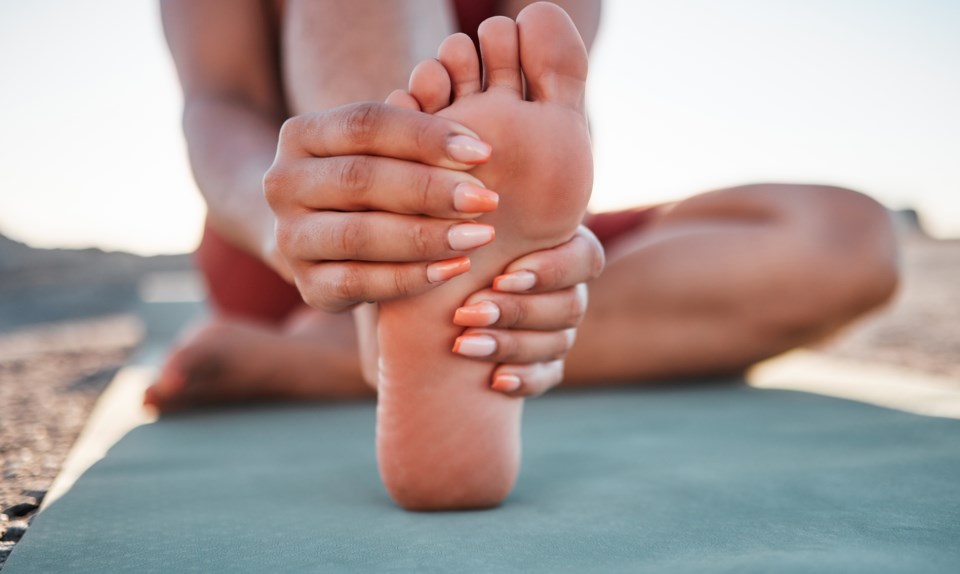Our feet form the foundation of our bodies’ movements and supports yet we rarely think about strengthening them like we do the rest of our muscles.
According to Josée Gingras, the Lead Pedorthist at The Stride Clinic, foot muscles and tendons play an important role in maintaining proper alignment and balance, preventing injuries, improving athletic performance, and enhancing overall mobility.
Village Media sat down with Josée to find out more about how we can strengthen our feet.
Where should we start when we want to strengthen our feet?
Josée: Most people can’t use their feet like their hands. Try placing your feet on the ground and then lift just your toes. Fan them as wide as possible and then place them back on the ground, maintaining your fan. Did it go as you might have thought?
Can there be differences in our feet between sitting and standing?
Josée: Yes, there can be a difference in your foot alignment between resting and standing. In other words, you have an arch when your foot is non-weight bearing that goes away when you stand. This used to be me until I found myself on a foot strengthening journey. I didn’t know how much of a change I would see!
What is something that we should remember when we think of our foot strength?
Josée: Foot strengthening for most people starts with building the mind to muscle pathways so it can take some time to see your feet do the things you’re telling them to do. I usually recommend starting with one foot at a time so you can focus better. Deformities also play a role in the challenging beginning to foot strengthening, so starting with your better foot is usually helpful.
How can we align our feet?
Josée: Foot strengthening over time can improve the alignment but in order to get there, and for all the times thereafter where we might not be able to be as intentional with our foot positioning, orthotics can be of benefit to realign the feet so that the muscles can function closer to their ideal ranges.
Once you have the strength to control your standing alignment, you can then use the orthotics as a queuing tool on a walk for example to practice engaging the different muscles of the feet during the different phases of gait.
What are some exercises that we can do at home?
Josée: Start small with a daily practice when you’re sitting and watching TV. Start by sitting and then progress to standing. Work on one foot at a time.
A great introductory exercise is rooting your feet to the ground. Start by putting weight into the heel and then slowly and controlled, press each knuckle joint (or metatarsophalangeal - MTPJ) into the ground starting at the fifth and working your way to the first. Keeping the heel and MTPJs locked into the ground, lift the toes, fanning them as far apart as possible and then, with control, press them flat into the ground. Keeping your knees from caving in and your posture upright, take a deep breath in then out and release.
Remember that building strength takes time; the exercises probably won’t go smoothly until the muscles become familiar with the movements.
Another easy trick is to practice fanning out the toes when you’re lying in bed before you fall asleep. Try not to have some pointing down and some up. Try to have them all fanning sideways but straight out.
We love helping people get in touch with their feet, if you’re interested and it applies to you, we always go over foot strengthening during our assessments.
To learn more about your feet and how they can best support you, call The Stride Clinic in Barrie at (705) 735-1013, in Orillia at (705) 326-5808, or visit them online.
